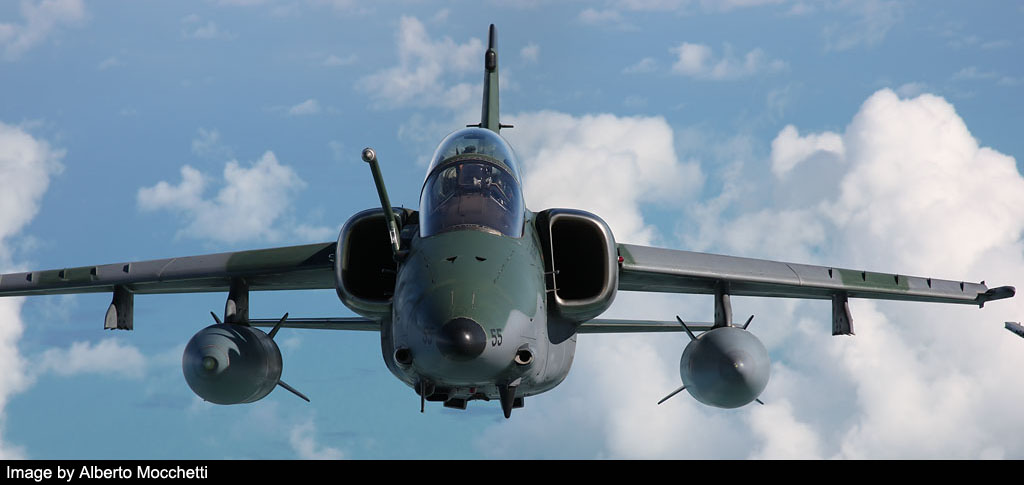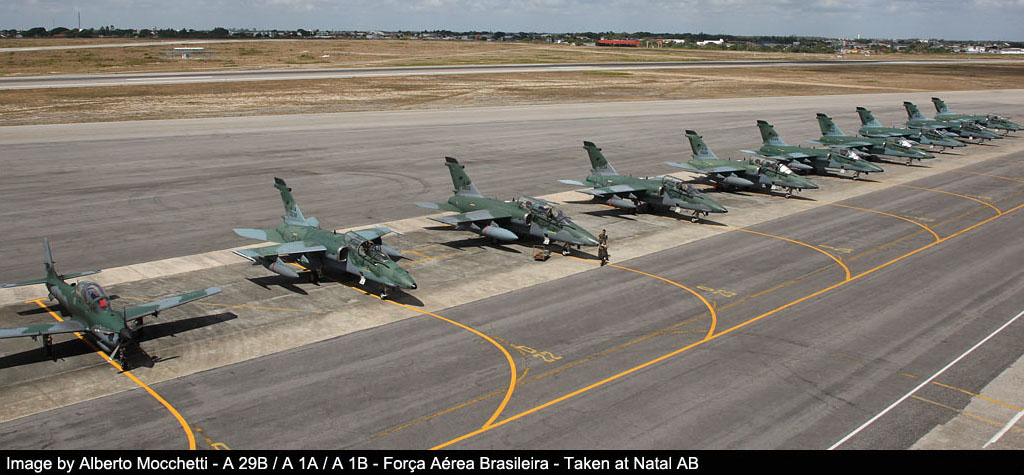 |
| |
 |
 |
 |
 |
 |
 |
 |
Dal 28 ottobre al 19 novembre si è svolta la quinta edizione della più importante esercitazione internazionale dell’America Latina. Teatro dell’evento le basi aeree della Forca Aerea Brasileira di Natal e Recife. Cinque le nazioni partecipanti: Stati Uniti, Francia, Uruguay, Cile e ovviamente il Brasile, doveva partecipare anche l’Argentina, ma proprio all’ultimo minuto si è ritirata per problemi economici. All’evento hanno partecipato circa 3.000 uomini e donne, e una novantina di velivoli, questi sono i numeri di un evento che ormai viene a pieno titolo paragonato alle più importanti esercitazioni “occidentali”, come il NATO Air Meet, o addirittura alla Red Flag.
Lo scopo principale per cui viene svolta l’esercitazione è l’addestramento della catena di Comando e Controllo di Forza Aerea, con finalità di acquisire maggiori capacità di pianificazione e gestione di scenari altamente complessi, utilizzando inoltre degli standard il più corrispondenti a quelli utilizzati dalla NATO. Ricordo invece che la maggior parte delle esercitazioni occidentali sono peculiari per addestrare gli equipaggi in scenari molto diversi da quelli “domestici” in particolar modo se assegnati alle missioni di Peace kepping effettuate nei vari teatri di operazione nelle zone critiche del pianeta.
Le cinque Forze Aeree hanno messo in campo degli assetti classici per un esercitazione che vede contrapposte la classica Forza di pace, che interviene sotto mandato dell’ONU, e la classica componente che ha occupato il piccolo Stato confinante.
Ovviamente la FAB (Forca Aerea Brasileira) è quella che ha messo a disposizione il maggior numero di mezzi aerei, impiegando quasi tutti i tipi di velivoli in servizio: caccia, cacciabombardieri, trasporti, sorveglianza radar ed elicotteri, inoltre ha garantito anche il servizio di soccorso SAR (Search and Rescue), sia con elicotteri della FAB che con una piccola componente della Marinha do Brasil, ed infine le forze ostili di Aggressor, dotate principalmente di F 5EM.
Gli Stati Uniti hanno partecipato con dei caccia F 16C e un Tanker KC 135R, la Francia con Rafale B, Mirage 2000C, il Cile con F 16C/D e un aerorifornitore KC 135E, infine l’Uruguay con dei A 37B e IA 58 Pucara che hanno svolto principalmente il ruolo di CAS (Close Air Support).
L’appuntamento, come di consuetudine, è per il 2013, anche se l’orientamento è quello di portare l’esercitazione da una cadenza biennale ad una triennale. |
 |
|
|
 |
|
|
 |
|
|
 |
|
|
 |
|
|
 |
 |
|
|
 |
|
Foto e testo di Alberto Mocchetti
Novembre 2010
|
|
English translation by Frank McMeiken
Between 28 October and 19 November the fifth edition of the most important international exercise in Latin America was completed. The 'theatres' for the event were the Forca Aerea Brasileira bases at Natal and Recife. Some five nations participated: the United States, France, Uruguay, Chile and, obviously, Brasil. Argentina was also scheduled to participate, but withdrew at the last minute due to economic problems.
Around 3,000 men and women were involved in the exercise, flying some ninety aircraft, and these figures are representative of a fully mature event, one that is comparable to the most important "Western" exercises, such as the NATO Air Meet, or even Red Flag.
The principal scope of the exercise was training for the Command and Control network of the Forca Aerea, aimed at the acquisition of enhanced capabilities of planning and management of highly complex scenarious while using the standards and protocols which corresponded most closely with those utilised by NATO. This is in contrast with the majority of "Western" exercises, which are peculiar in that they aim to train the crews in scenarios which are very different from their domestic operations, and which aim to develop skills which can be transferred to the Peacekeeping missions performed in operational theatres in the critical areas of the planet.
The five air forces involved deployed classic assets into the field for an exercise which centred around a Peacekeeping force, intervening under a UNO mandate, and a traditional force which had occupied a small adjacent state.
Obviously, it was the FAB (Forca Aerea Brasileira) that allocated the greatest number of aircraft to the exercise, including almost all of the types of aircraft in service: interceptors, fighter-bombers, transports, airborne radars, and helicopters. In addition, it guaranteed the availability of a SAR (Search and Rescue) servicei, undertaken by helicopters of the FAB and a small component from the Marinha do Brasil.
It also provided the Aggressor hostile forces, principally composed of F-5EM. The United States involvement comprised F-16C fighters and a KC-135R tanker, while the French flew Rafale B and Mirage 2000C. Chilian participation included F-16C/D and a KC-135E tanker, while finally Uruguay brought A-37B and IA 58 Pucara, which were principally involved in the CAS (Close Air Support) role. The next exercise is scheduled for 2013, although it is intended in the future to organise it on a triennial rather than biennial basis.
|
|
Images and text by Alberto Mocchetti
November 2010
|
|